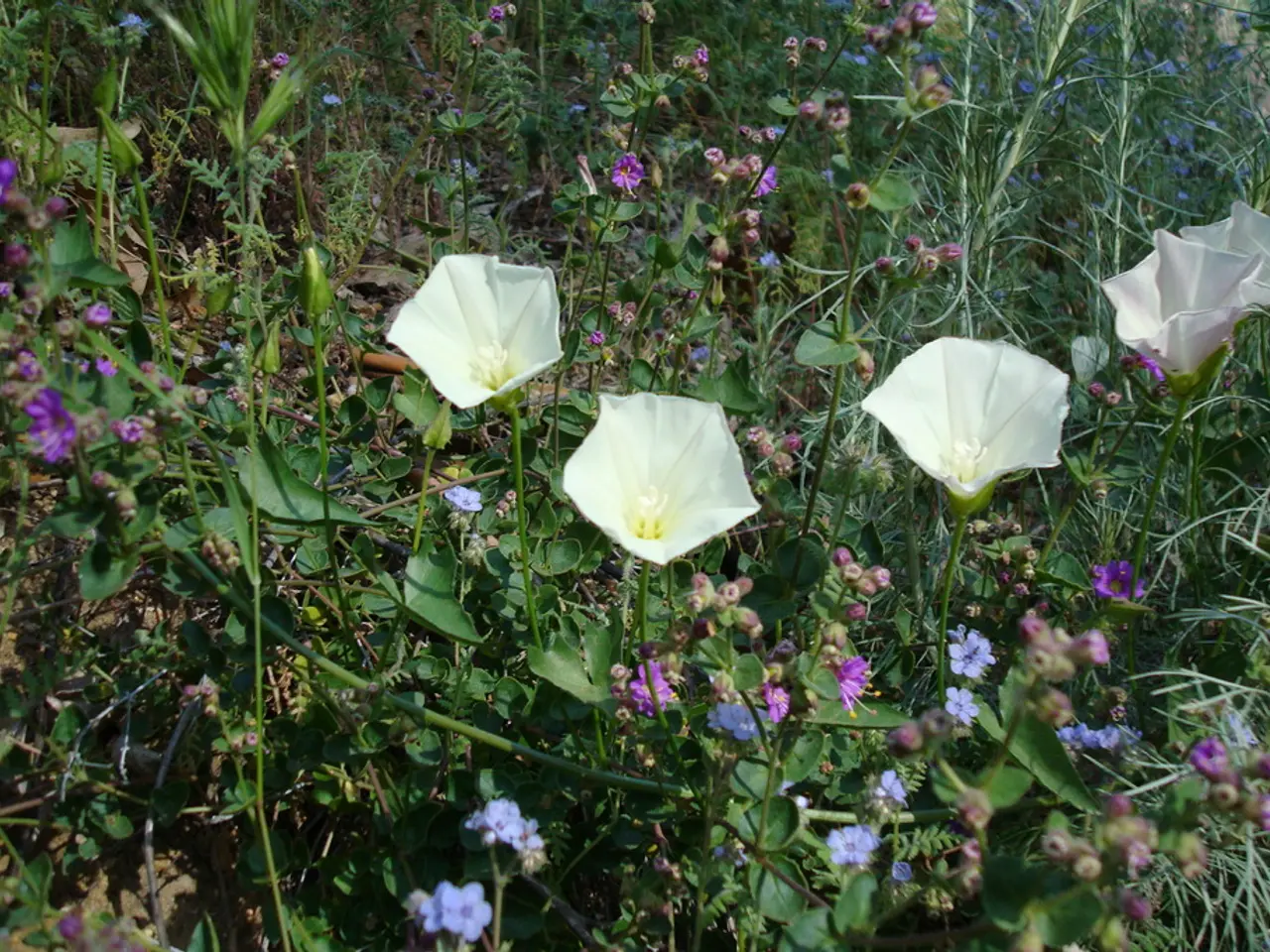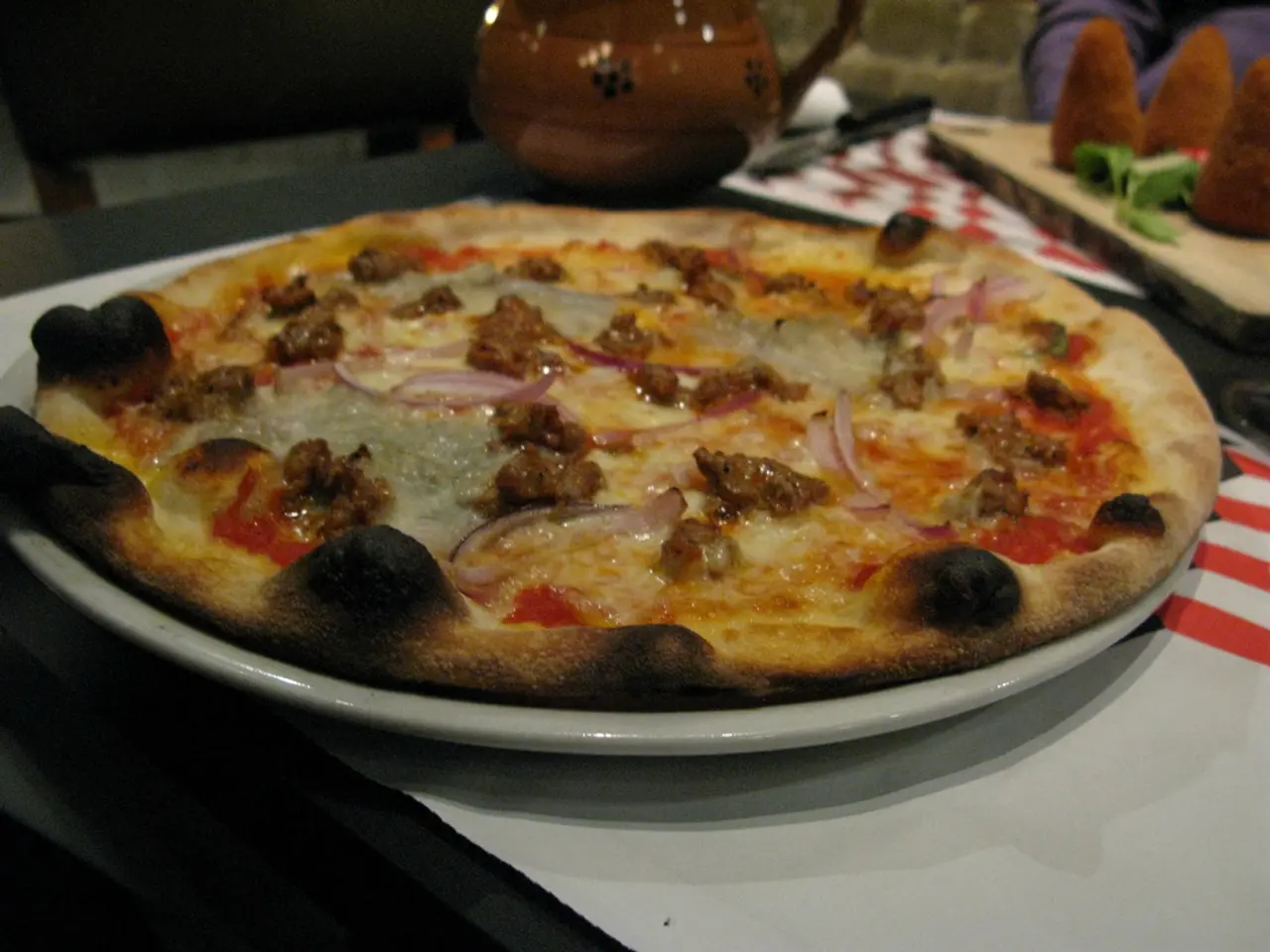native Irish plants believed to be fuchsia and montbretia are actually invasive species in Ireland
In the beautiful landscapes of Ireland, gardeners play a crucial role in preserving the country's biodiversity by managing invasive plant species. Here's a guide on how to identify and control these unwanted guests.
Firstly, it's essential to know which plants are invasive. The scarlet-flowered shrubby fuchsia (Fuchsia magellanica) and orange-flowering montbretia (Crocosmia x crocsmiiflora) are common examples that are not native to Ireland. Fuchsia magellanica is a deciduous shrubby species from South America, while montbretia is a vigorous and resilient perennial from South Africa.
Giant rhubarb (Gunnera tinctoria) and New Zealand pygmyweed (Crassula helmsii) are other invasive plants that can cause harm. Giant rhubarb can clog waterways and crowd out native species, while pygmyweed has a dense, floating, carpeting growth habit that suppresses growth and germination, reducing the amount of oxygen in the water.
Japanese knotweed (Reynoutria japonica, formerly known as Fallopia japonica) is another invasive species that was introduced as an ornamental plant and fodder crop. It can cause significant damage to roads, driveways, and building foundations.
To identify invasive plant species in your garden, begin by inventorying the plants present and comparing them to lists or databases of known invasive species for your region. Resources such as university extension services, local environmental agencies, or specialized invasive species identification services can help. Many workshops and guides focus on teaching how to recognize invasive plants and distinguish them from native or benign species.
Once identified, the key to managing invasive plants is early action. Prioritize tackling the worst or most troublesome species or infestations first. Key strategies include:
- Preventing seed production by removing flowers or seedheads and disposing of them properly.
- Digging trenches around invasive patches to limit root spread, particularly for shallow-rooted groundcovers.
- Physically removing plants, ideally during moist soil conditions to reduce root breakage and allow for more effective extraction.
- Using light and moisture exclusion by cutting stems at ground level and covering the plant to stress it, but research species-specific recommendations before attempting this method.
For large infestations or cases where identification or management is unclear, consulting professionals or attending workshops can provide additional support and techniques.
Some common invasive plants encountered in Ireland include bamboo, buddleia, rhododendron, Himalayan balsam, and giant hogweed. American skunk-cabbage (Lysichiton americanus) and giant hogweed pose serious threats to vulnerable ecosystems and human health, respectively.
The story of invasive plants is not just historical; it continues today due to gardeners' curiosity and easy access to a wide range of species. Gardeners can help prevent the spread of invasive plant species by sourcing plants and seeds responsibly, avoiding planting non-native species in the wild, and taking decisive action when an invasive species is found.
In August, there are several events that promote responsible gardening and biodiversity. The Wild Garden Adventures: Pond Dipping workshop is taking place at the National Botanic Gardens, Dublin 9, on August 6th, exploring the diversity of insects and mini-beasts living in and around the ponds. The Farmleigh House Plant Fair is taking place in Phoenix Park, Dublin on August 3rd, featuring stalls by members of the Irish Specialist Nursery Association and a craft and food market. The Irish National Vegetable Championships are taking place at The Showgrounds, Moate, Co. Westmeath on August 24th, as part of the Moate Agricultural Show and including a new junior category.
In conclusion, by combining careful identification using trusted resources and proactive management, gardeners can help prevent invasive plants from spreading and causing ecological or property damage. Let's work together to maintain the beauty and biodiversity of Ireland's gardens.
- In the realm of environmental science, and considering the ongoing issue of climate change, understanding which plants are invasive is crucial for gardeners in Ireland to protect the country's biodiversity.
- Adopting sustainable and responsible gardening practices, such as sourcing plants and seeds responsibly and managing invasive species, can significantly contribute to maintaining the ecological balance in home and garden environments, aligning with broader lifestyle choices that promote a healthier planet.




